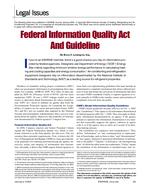Track: Fundamentals and Applications
Sponsor: 2.3 Gaseous Air Contaminants and Gas Contaminant Removal Equipment, 2.4 Particulate Air Contaminants and Particulate Contaminant Removal Equipment
Chair: Kyung-Ju Choi, Ph.D., Member, Clean & Science, Louisville, KY
Indoor air contaminants such as PM2.5, dust, smoke, formaldehyde, radon, NOx, SOx, O3, VOCs, sVOCs such as phthalate, odor, airborne allergens, mold, bacteria and viruses have been linked to adverse health effects. This seminar provides information that helps assess the impact of the indoor air contaminants as well as understand current methods of removing them by means of air cleaning devices.
1. Fate and Transport of Phthalates in Indoor Environments and the Influence of Temperature: A Case Study
Chenyang Bi and Ying Xu, Ph.D., Associate Member, The University of Texas at Austin, Austin, TX
A case study in a test house was conducted to investigate the fate and transport of benzyl butyl phthalate (BBzP) and di-2-ethylhexyl phthalate (DEHP) in residential indoor environments and the influence of temperature. Total airborne concentrations of phthalates were sensitive to indoor temperatures, and their steady-state concentration levels increased by a factor of three with an increase in temperature from 21 to 30 ºC. Strong sorption of phthalates was observed on interior surfaces, including dust, dish plates, windows, mirrors, fabric cloth and wood.
2. Impact of Residential HVAC Filters on Indoor Air Quality
John Zhang, Ph.D., Member, 3M Personal Care Division, St. Paul, MN
Filtration and ventilation are commonly used to remove or dilute airborne contaminants and improve indoor air quality. This presentation concentrates on the effectiveness of residential HVAC filters for reducing air contaminants in residential buildings. To assess the efficacy of residential HVAC filters, efficiencies and pressure drops of filters of different MERV levels were first measured according to ASHRAE 52.2. Then an indoor air quality (IAQ) model was applied to characterize health-relevant indoor aerosols in different residences with various combinations of filter types and ventilation conditions. Modeling results are discussed in the presentation.
3. Effectiveness of Residential Air Cleaning Devices in Removal of Particulate and Gaseous Pollutants: A Review
Thad Ptak, Ph.D., Member, A. O. Smith Corporation, Milwaukee, WI
Indoor air pollution is an environmental health risk. The methods of reducing concentration of indoor contaminants vary, depending on the design of the air cleaning device, its location and on the contaminant phase. Air cleaning devices can be categorized by the type of contaminant that they remove, particulate and gas phase. This presentation covers recent studies of various filtration methods and their effectiveness in removal of particulate and gas phase pollutants. Test methods used to assess the performance of air cleaning devices are presented and their applicability to various contaminants is discussed.
Presented: June 28, 2017, 11:00 AM-12:30 PM
Run Time: 90 min.
This is a zip file that consists of PowerPoint slides synchronized with the audio-recording of the speaker (recorded presentation), PDF files of the slides, and audio only (mp3) for each presentation.
Citation: ASHRAE Seminar Recordings, 2017 ASHRAE Annual Conference, Long Beach , CA
Product Details
- Published:
- 2017
- Units of Measure:
- Dual
- File Size:
- 1 file , 100 MB
- Product Code(s):
- D-LB17Sem61


